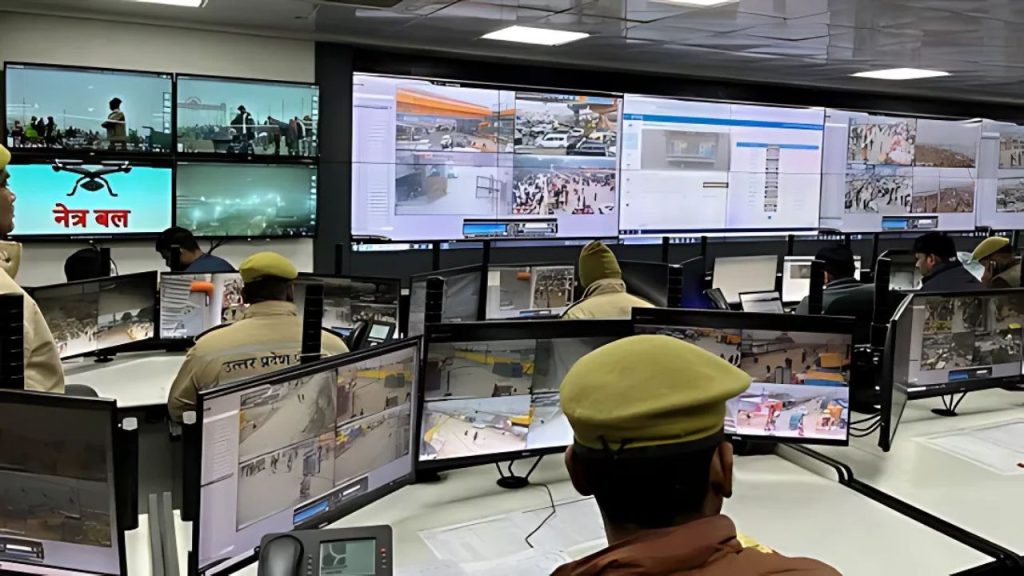
The Mahakumbh, one of the largest religious gatherings in the world, attracts millions of devotees from across India and beyond. The event is an extraordinary demonstration of faith, culture, and tradition, but it also presents unique challenges in terms of crowd management and ensuring the safety of participants. In recent years, technological advancements, particularly in the areas of facial recognition and artificial intelligence (AI), have significantly enhanced the ability of authorities to manage these vast crowds and provide effective solutions for tracking missing persons.
The Mahakumbh, held every 12 years at one of four sacred riverbanks in India—Allahabad (Prayagraj), Haridwar, Ujjain, and Nashik—presents complex logistics. During the festival, millions gather to take part in holy rituals, bath in the river, and seek blessings. With such large numbers, the challenge of crowd management becomes paramount. The possibility of people getting lost amidst the crowds is an unfortunate but inevitable reality. In response, authorities have been increasingly relying on cutting-edge technologies to ensure the smooth functioning of the event and safeguard the participants.
The Role of Facial Recognition in Crowd Management
Facial recognition technology has made significant strides in recent years, with its applications spanning various industries, including law enforcement and security. The Mahakumbh has leveraged this technology to tackle the monumental task of tracking individuals in large crowds. By using facial recognition cameras installed at various strategic locations, authorities can identify and track participants in real-time.
At the Mahakumbh, one of the primary concerns for authorities is the safety and security of devotees. Due to the overwhelming number of people attending the event, it is easy for individuals, particularly children and the elderly, to become separated from their groups. Facial recognition technology enables authorities to quickly identify missing persons, whether they are lost in the crowds or have been reported as missing. This helps to expedite the process of locating them, reducing the time and effort traditionally required to manually search for missing individuals.
The system works by capturing images of people as they enter the designated areas of the festival. These images are then compared to a database of photos of registered participants. If a match is found, the system alerts the authorities, allowing them to promptly locate the individual. Additionally, this technology can help track people as they move through the event, which is critical in a setting as large and crowded as the Mahakumbh.
Facial recognition also plays a crucial role in ensuring security. Given the massive scale of the Mahakumbh, security is always a concern, and the use of AI-powered surveillance systems helps to spot potential threats. The system can quickly identify individuals with suspicious activities or those on watch lists, further enhancing the overall security measures.
Artificial Intelligence: Enhancing Efficiency and Safety
AI technology has also been instrumental in improving the efficiency of crowd management. The Mahakumbh takes place in a temporary city, with roads, pathways, and infrastructure set up specifically for the event. Managing the flow of such a large number of people requires real-time analysis of the crowd’s movement, behavior, and density. AI-powered systems, combined with other technologies such as drones and satellite imagery, are used to monitor the crowd dynamics continuously.
AI can analyze patterns in the movement of people and provide real-time insights to authorities. By detecting areas of congestion or crowd bottlenecks, AI can suggest alternative routes or direct authorities to deploy additional resources to prevent potential crowd-related accidents. This predictive capability is invaluable in a festival like the Mahakumbh, where any mismanagement can lead to serious safety issues.
One of the most impressive features of AI in the Mahakumbh is its ability to anticipate and mitigate risks in crowd behavior. AI algorithms can detect subtle shifts in crowd movements that may indicate panic, pushing, or stampedes. By analyzing the behavior of the crowd, AI systems can provide early warnings, allowing authorities to intervene before a situation escalates.
Moreover, AI can optimize the distribution of resources. Given the large number of services required—ranging from medical facilities to sanitation—AI can help allocate resources to areas that are most in need based on real-time data. This ensures that services are provided efficiently and that the crowd is managed in an organized manner.
Real-Time Communication Systems
One of the key components of the crowd management strategy at the Mahakumbh is the use of real-time communication systems. Authorities, security personnel, and volunteers are equipped with advanced communication tools that integrate with facial recognition and AI-powered systems. This ensures that once a missing person is identified or a crowd issue is detected, relevant teams can act quickly to address the situation.
In the case of missing persons, relatives can report the disappearance, and facial recognition systems can match the missing person’s image against the live data streams. If a match is found, the information is communicated to the relevant authorities, who can then coordinate with on-ground teams to reunite the person with their family. This level of real-time coordination and communication has significantly improved the efficiency of response efforts.
Additionally, these communication systems play a vital role in crowd safety. With so many people in attendance, it is critical that information regarding potential hazards, traffic diversions, or safety protocols is communicated clearly and immediately. AI systems can also provide automated alerts through loudspeakers, social media platforms, or mobile apps, ensuring that everyone is informed and able to take appropriate action.
Addressing Privacy Concerns
While facial recognition and AI have significantly enhanced the ability to manage crowds and ensure safety, they have also raised concerns regarding privacy and data security. Critics argue that mass surveillance, particularly using facial recognition, can infringe on individuals’ privacy rights. There are also concerns about the misuse of personal data and the potential for it to be accessed by unauthorized entities.
Authorities have taken steps to address these concerns by implementing strict data protection protocols. Participants in the Mahakumbh are given the option to voluntarily register for the facial recognition system, and their consent is required before their images are captured. The data collected is used solely for the purpose of ensuring safety and security during the event and is not stored beyond the duration of the festival.
Furthermore, AI algorithms are designed to focus primarily on crowd management and public safety rather than tracking individuals for personal or commercial purposes. To mitigate any concerns about the misuse of data, authorities have established transparent guidelines for how data is handled and safeguarded throughout the event.
Future of Technology in Religious Gatherings
The use of facial recognition and AI at the Mahakumbh is just the beginning of what could be a broader trend in the way large-scale events are managed. As technology continues to advance, it is likely that these systems will become more refined, efficient, and widely adopted in similar religious and cultural gatherings across the world.
The potential for these technologies to improve safety, streamline logistics, and prevent accidents at such events is immense. They allow authorities to provide a more secure environment for attendees while also ensuring that the traditions and sanctity of religious festivals are upheld.
In conclusion, the use of facial recognition and artificial intelligence has transformed how authorities manage crowds and track missing persons at the Mahakumbh. These technologies have not only enhanced security but have also significantly improved the overall experience for the millions of devotees who attend this sacred event. As the world continues to embrace technological advancements, the integration of AI and facial recognition into crowd management will likely become an essential tool for ensuring the safety and smooth conduct of large-scale events globally.
